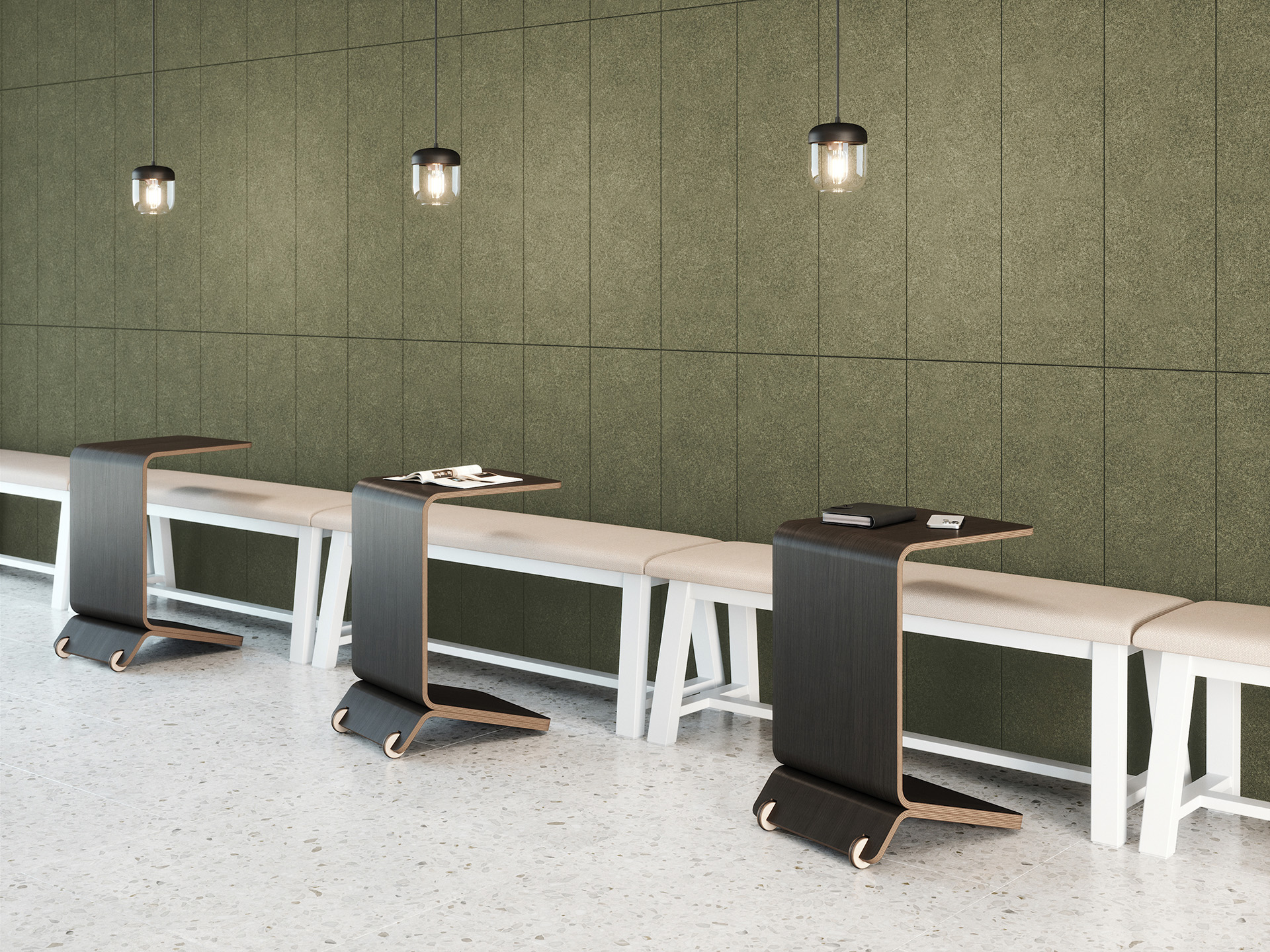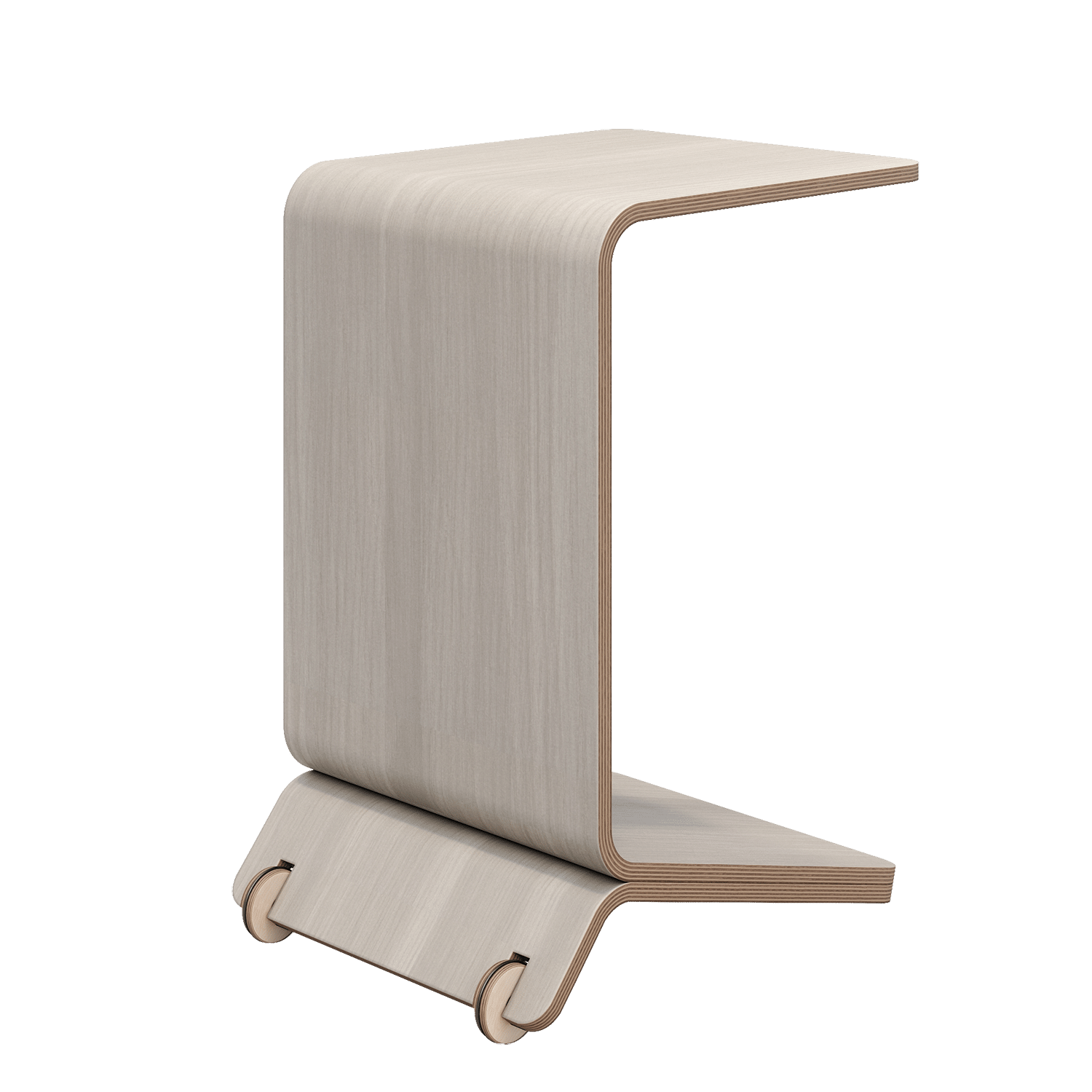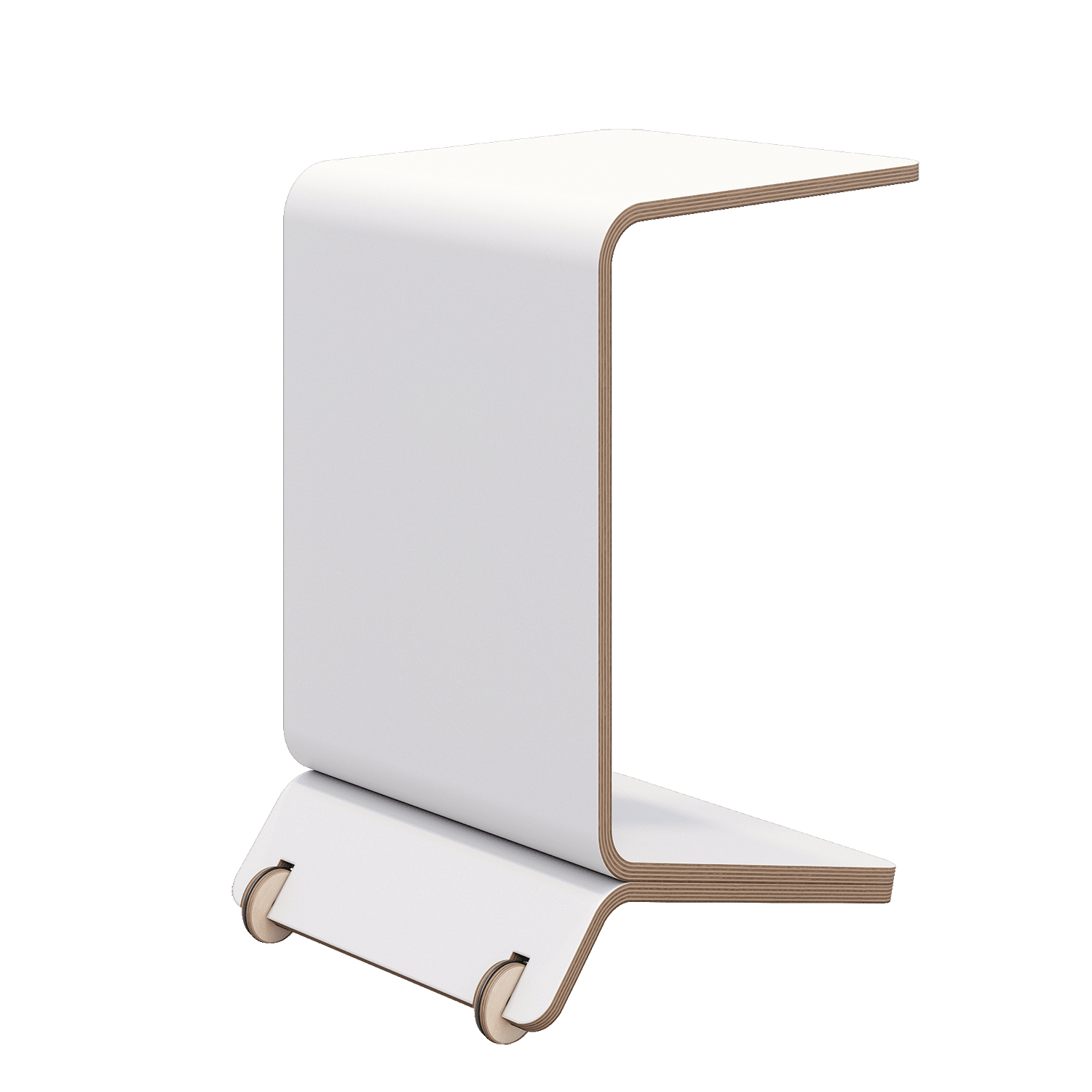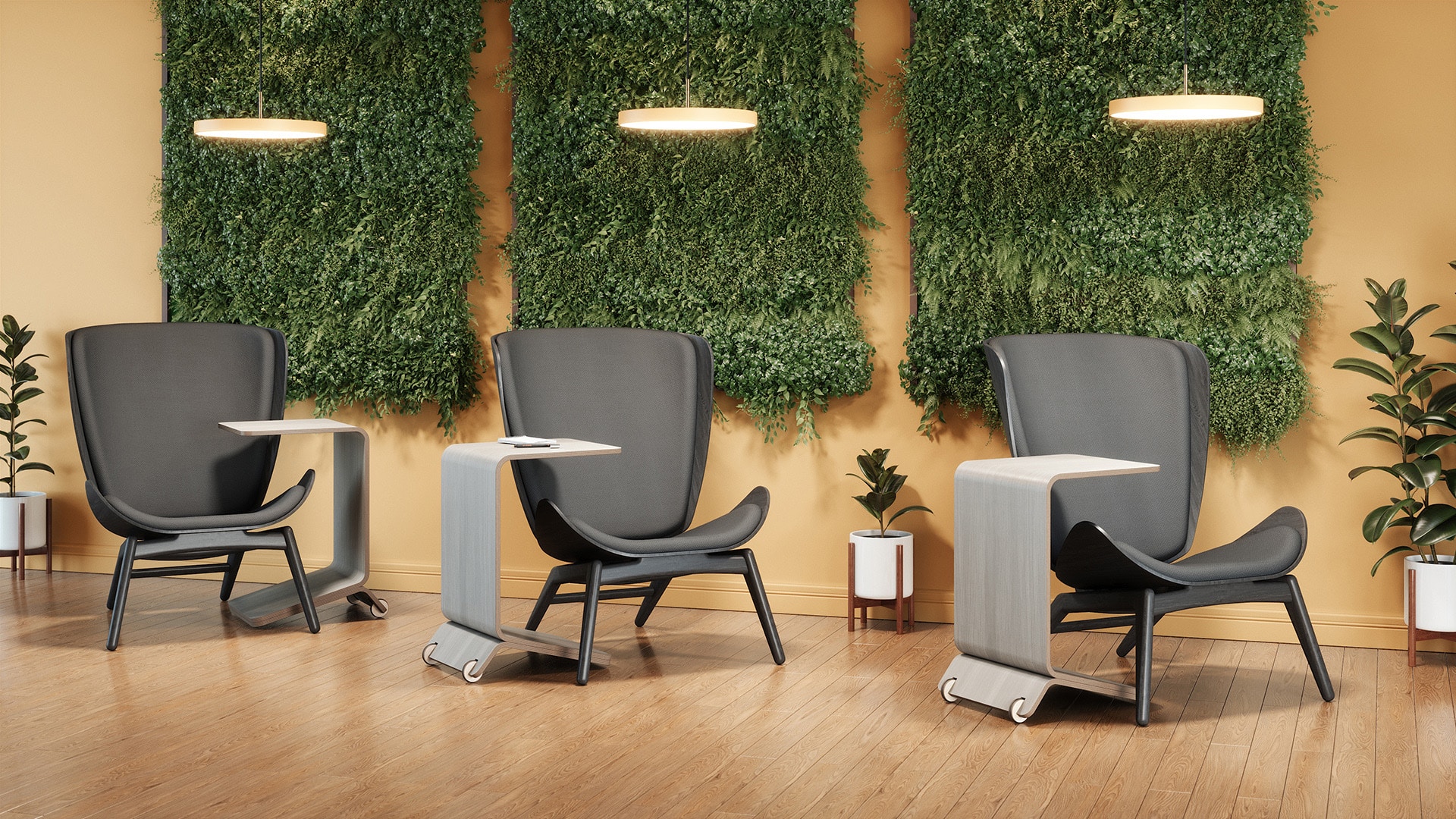We had a conversation with Jeff Theesfeld of Union Design to talk about the inspiration and design process for the Willow laptop table.
Where did the idea for Willow come from?
Willow is the result of a true form follows function approach to the design process. I first looked at how a user interacts with a pull up table and from there quickly realized that from a functionality standpoint there were a few user needs that really stood out. And so, I started with those needs and based the design around that.
What needs did you see should be considered?
I realized that it was important for the user to be able to get in and out of their seat easily as well as being able to bring the table surface towards them without much effort. This is what drove the decision for the wheels and the finger groove.
Then I studied the act of using a pull up table while using a laptop and realized that some ergonomic features could benefit users. That’s why I came up with an angled bottom surface – so the users’ feet could be positioned at a comfortable angle.
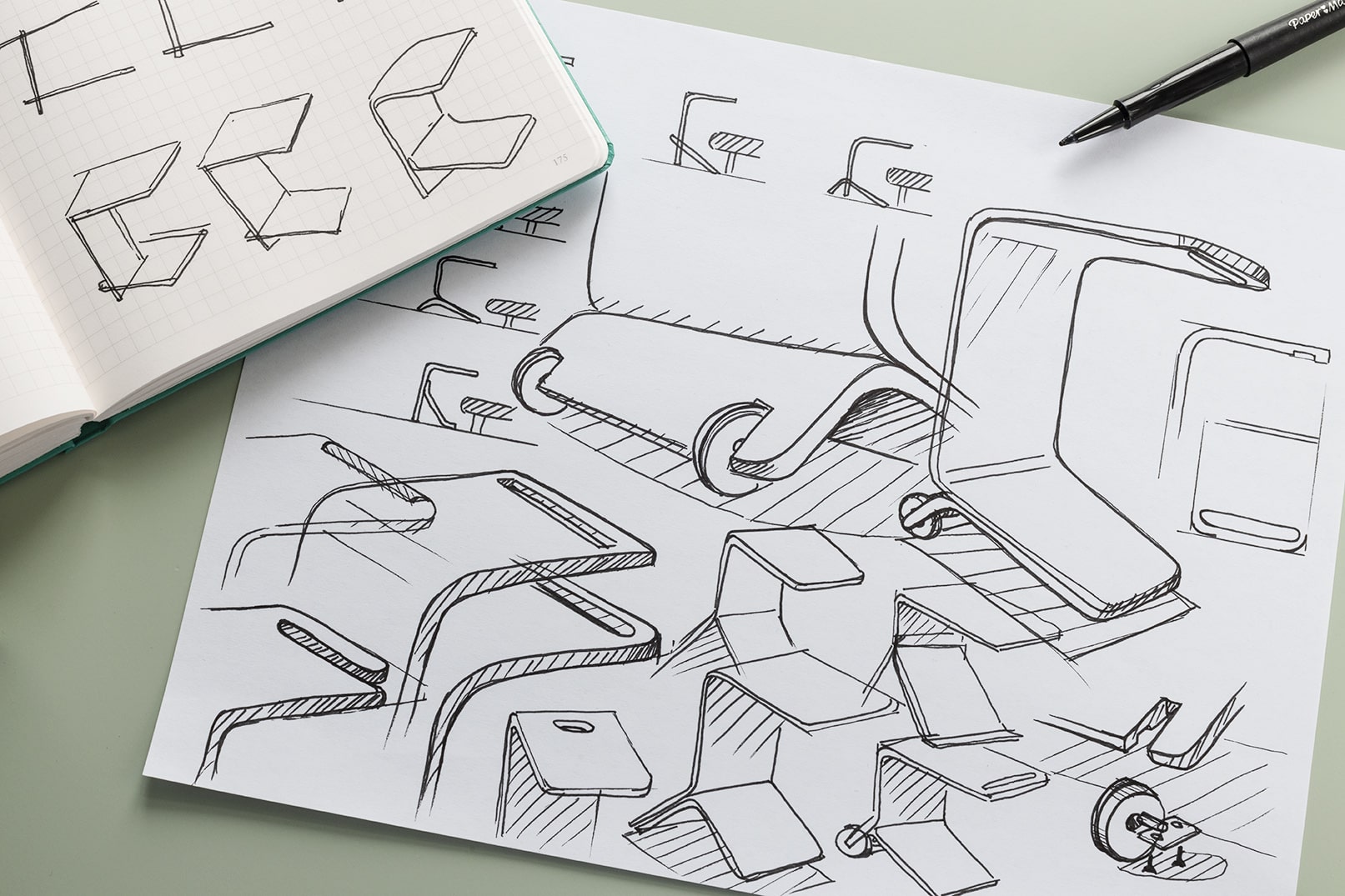
What influenced the design process?
Once I addressed the functional necessities of the table, I was able to connect the dots and create a form that is as minimal as possible. I immediately saw that sheet metal or plywood would be a good solution and plywood won out for its added thickness and warmth.
And while the design process for Willow was driven by the function, I was also drawn to modernist principles. In particular, the details of the wheel. I could have molded a plastic wheel of any shape, but I felt a more honest approach was to use plywood for the wheel and add a simple rubber O-ring for a tire. It’s the restraint in the design process that dictates the end form.
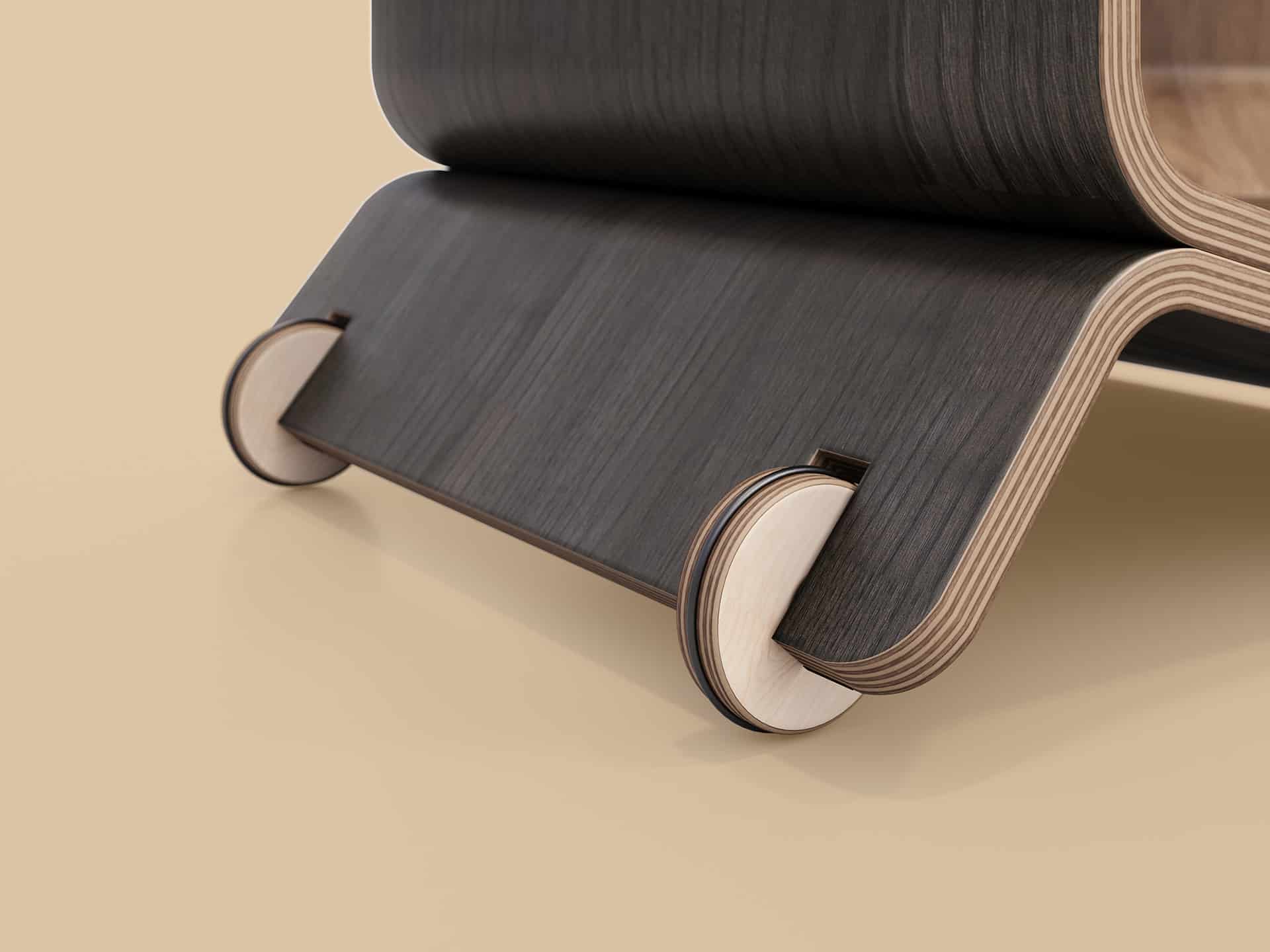
What was the most challenging part about creating Willow?
The biggest challenge of creating Willow was determining if there would be enough strength from plywood to support a large overhang. This overhang was important to the function and purpose of Willow but was quite severe for the material and for testing. After working through several prototypes, we determined that the plywood would need to be braced. I did this by hiding steel supports inside the laminations of the plywood. This metal laminated structure introduced other manufacturing challenges though. When the piece was formed in the press, the metal would string back at a different rate than the plywood resulting in a work surface that was not flat. We solved this through multiple rounds of tool revisions until we perfected the process. Willow is deceptively simple, and simplicity is the hardest thing to achieve.
How do you think Willow plays a role in the current workspace trends?
Willow is a direct response to the changing way in which people are choosing to work. I wanted to create a product that could work in the new ways people are working – where they aren’t tied down to a desk. People are working more often in seating like sofas and lounge chairs.
And with the proliferation of phones, tablets, and mobile computing in general, people can work from a smaller work surface and in a variety of postures. You can use Willow overhanging a sofa from the side when you have your legs up or if you are in a more alert upright position you can work with Willow in front of you.
Willow also addresses the need for mobility in spaces. Its wheels and lightweight structure allow users to move it wherever they need it. You can bring multiple Willow tables together around a modular seating system to make an impromptu meeting space. Then, when you are done, you have the flexibility to take it somewhere else like a quiet lounge chair to focus. Willow is really freeing the side table from one fixed location and bringing it to wherever you want to go.
